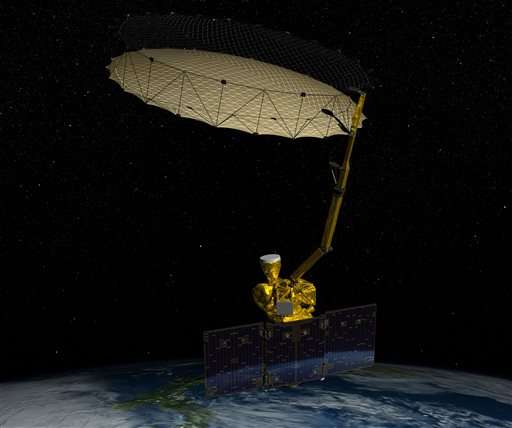New NASA soil moisture satellite loses one science instrument

A NASA satellite launched just seven months ago has lost the use of one of two science instruments, but the space agency said Wednesday that the mission to map global soil moisture will continue.
The radar instrument aboard the Soil Moisture Active Passive satellite stopped transmitting on July 7 due to a problem with a high-power amplifier. An anomaly team was formed at Jet Propulsion Laboratory to determine if normal operation could be restored, NASA said.
An attempt to power up the radar on Aug. 24 was unsuccessful, and it was determined that all possible options had been exhausted and the radar was not recoverable, a space agency statement said.
The SMAP satellite was launched Jan. 31 from Vandenberg Air Force Base, California, on a three-year, $916 million mission to map soil moisture around the globe and determine whether the soils are frozen or thawed.
In addition to increasing knowledge about Earth's water, energy and carbon cycles, its practical uses may include improving monitoring and predicting floods and droughts and improving weather forecasting and predictions for crop yields, according to NASA.
The satellite's science operations began in April and it collected nearly three months of data while the radar was operating. The first global soil moisture maps were released on April 21.
NASA said the satellite's active radar and passive radiometer instruments were designed to complement each other and overcome each instrument's limitations.
Dara Entekhabi, the SMAP science team leader at the Massachusetts Institute of Technology, said in a statement that some planned applications of data will be impacted by the loss of the radar, but the mission will continue to produce "valuable science for important Earth system studies."
NASA appointed a board to determine how the problem occurred and JPL will form a separate failure review board to work with that investigation.
© 2015 The Associated Press. All rights reserved.




















